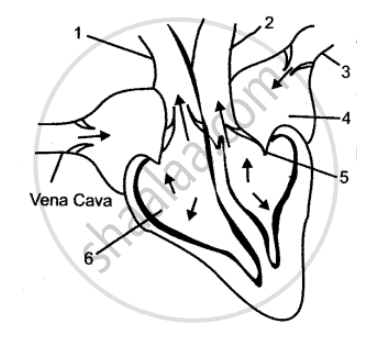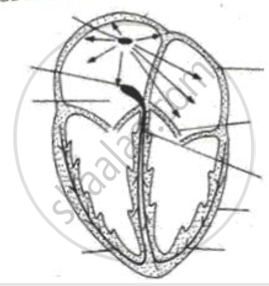Advertisements
Advertisements
प्रश्न
The diagram given below represents the human heart in one phase of its activity. Study the same and then answer the question that follow:
Which part of the heart is contracting in this phase? Give a reason to support your answer.

उत्तर
Ventricular muscles are contracting during this phase because the valves between the two ventricles and pulmonary artery and aorta are open while the atrio-ventricular valves are closed.
APPEARS IN
संबंधित प्रश्न
The human body has an organ A which acts as a double pump. The oxygenated blood coming from the lungs through blood vessel B enters the upper left chamber C of the double pump. When chamber C contracts, then blood goes into the lower left chamber D. The contraction of chamber D forces the blood to go into a blood vessel E which supplies oxygenated blood to all the organs of the body (except the lungs). The deoxygenated blood coming out of the body organs is taken by a blood vessel F to the right upper chamber G of the pumping organ. Contraction of chamber G forces the deoxygenated blood into the right lower chamber H. And finally, the contraction of chamber H sends the deoxygenated blood into the lungs through blood vessel I.
- What is organ A?
- Name the blood vessel (i) B (ii) E (iii) F, and (iv) I.
- What are chambers (i) C, and (ii) D?
- What are chambers (i) G and (ii) H?
What is Sinus arrhythmias?
Explain the following:
Why is the SA node called the pace-maker of the heart?
Label the following diagram :

Differentiate between:
Diastole and Systole.
The diagram given below represents the human heart in one phase of its functional activities. Study the same and answer the questions that follow:
(i) Name the phase.
(ii) Label the parts 1, 2 and 3
(iii) Which part of the heart is contracting in this phase ? Give a reason to support your answer.
How are arteries and veins structurally different from one another?
Identify the INCORRECT statement regarding heart.
The QRS complex in a standard ECG represents ______.
Explain the term Ligamentum arteriosum.
